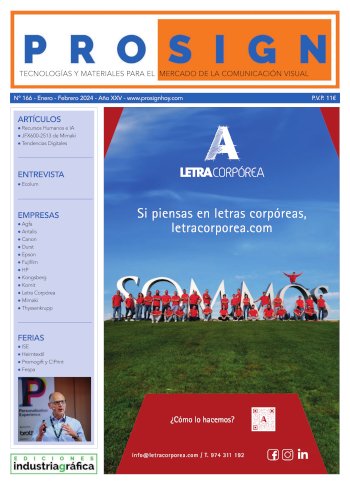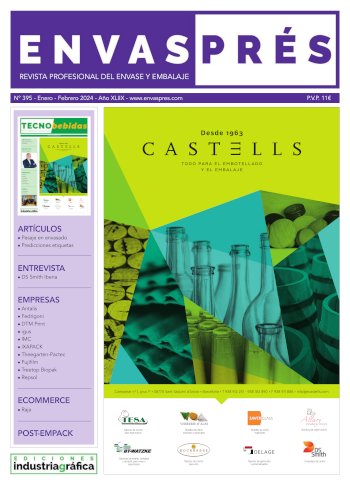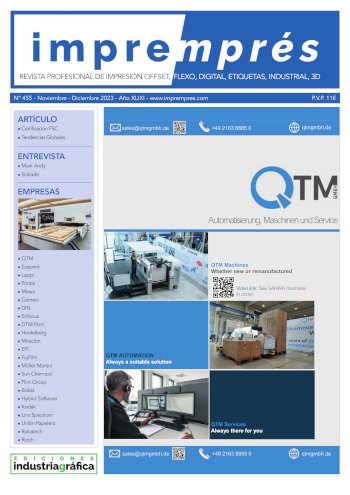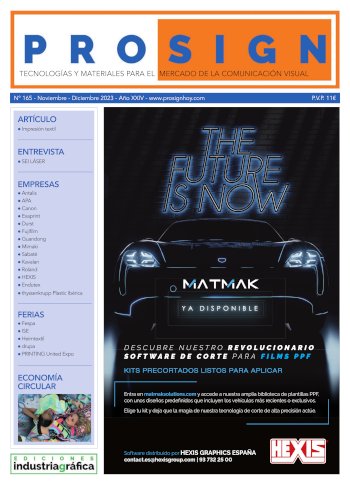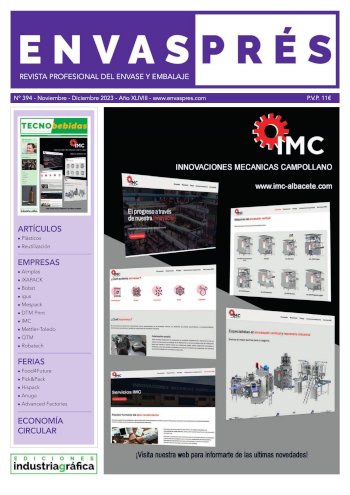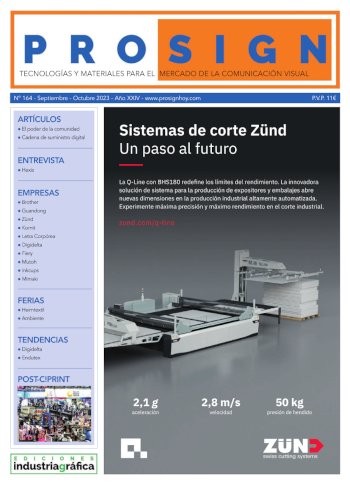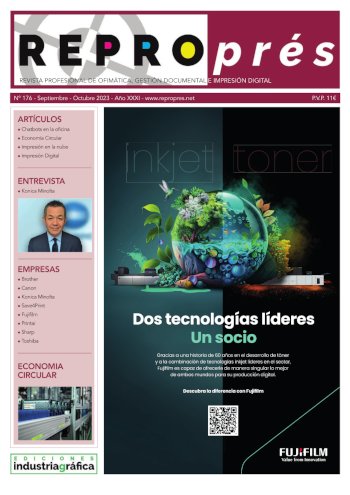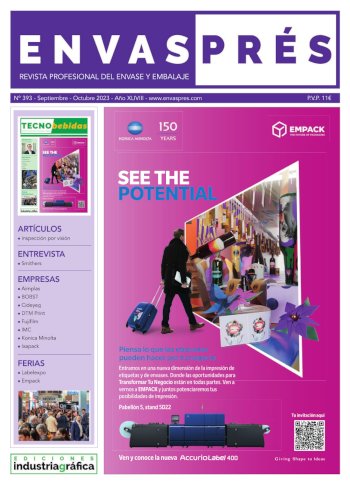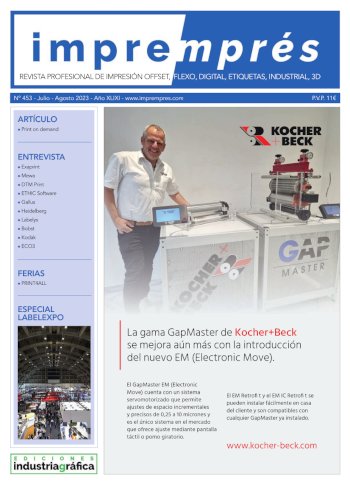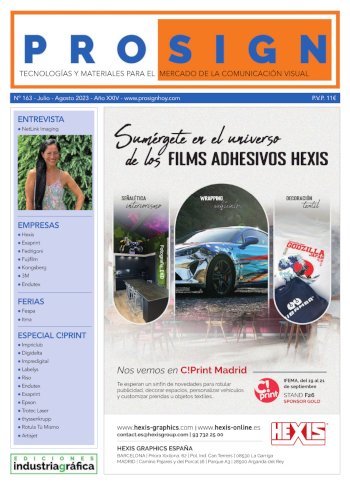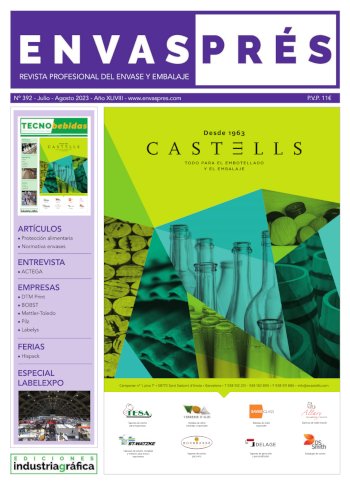Azura and the modern printer
- Publicado el 20 de Enero de 2014
Gareth Ward, Industry Specialist and Editor PRINT BUSINESS, wrote this article. Today’s commercial sheetfed printer is under pressure from all directions. There is falling demand for his services as customers find alternative ways to deliver messages to their customer base, which combined with over capacity in the sector, adds up to pressure on margins. The demand is for ever shorter print runs and faster turnarounds, putting pressure on the production workflows he has in place. There is pressure from legislation to cut waste and carbon generation, and pressure to achieve ever greater efficiencies.
In the years since the financial crisis, paper consumption in the developed markets of Europe, North America and Japan has fallen, by as much as 28% in Western Europe according to the paper industry. This does not mean 28% fewer jobs have been printed. Shorter print runs and especially last wastage thanks to automated makereadies have reduced the amount of paper needed. But more than half has been because of a migration away from print.
Fact is that the use of digital communication channels for advertising is increasing. The likes of Google, Facebook and perhaps Twitter to come are taking a rising proportion of advertising budgets. In Europe display advertising spend on the internet and search is running at the same level as advertising on television, pushing advertising in newspapers and magazines into third place. As advertising is the biggest driver for print, this is revenue that will never be recovered.
The commitment by Europe to cut carbon emissions by 50% by 2050 while at the same time maintaining economic growth has yet to have a direct impact on European printers but it will come. Legislation being enacted across the EU will force stock market listed companies to publish figures about the greenhouse gases that they generate. At first this will focus on the emissions that these companies are directly responsible for, but it will quickly spread through their supply chain. And that means printers will be judged on their carbon footprints as well as on quality, service and price. There is pressure to cut water usage, mostly through higher prices, with legislation to prevent waste fluids being discarded into the drainage systems.

Further legislation to cut waste to landfill by increasing taxes and the growing calls by consumers for transparency in the wake of the scandals affecting food supply around Europe adds more pressure to printers to not only declare their commitment to sustainable production techniques but also to demonstrate it.
Given these pressures, it would be logical to assume that printers will turn to digital printing technologies to deliver short runs. But while this is indeed happening, it is not happening to the extent that has been predicted and continues to be predicted. Digital printing does not deliver the guaranteed quality, the productivity or the cost of litho. It’s only unique selling point is variable data, and jobs which demand variable data are in the minority.
And at the same time advances in workflows and press automation have cut the make ready time on a litho press to minutes. Speed remains unmatchable and consequently a litho press can be competitive with digital printing at just a few hundred sheets. The giant web to print printers are happy to gang up dozens of small jobs on a sheet and print just 500 sheets, taking work that might be printed digitally. And provided there is no change of paper and format, sheetfed printers can get make ready times down to less than four minutes with only 20 wasted sheets. Digital printing cannot compete, even if toner or inkjet technologies could match the quality and versatility of offset litho printing.
Litho printing is a mature process, but this does not mean that development and progress have ceased. On press automation and closed loop colour control deliver the quality that customers need, running speeds have reached 18,000sph and have pulled ink companies to develop inks which will be stable at these speeds, drying technologies are cutting the energy required to run a press and deliver a ready to process sheet. Improvements in press stability mean that it is possible to run a litho press without the addition of isopropyl alcohol in the fount solution. Presses can be supplied as carbon neutral, that is any carbon emissions expended in their construction is balanced by planting trees to absorb that amount of carbon dioxide.
The introduction of computer to plate imaging in the 1990s was the first response to tackle the threat posed by digital printing. At once steps were removed from the production process and a printer could count on a plate that was delivered in register and which was more accurate than any plate made by contacting film. After imaging these plates need processing in a chemical solution which is highly alkaline and so needs to be treated as notifiable waste after use. From the processing tank, the plate moves to a wash tank where water stops the chemical reaction, but creates further waste. Computer to plate was not an environmentally friendly process.
This spurred development of new no process plates as the way to eliminate this chemical heavy processing. Two approaches emerged: one was the develop on press plate where the platesetter fixes the image to the aluminium surface and the non image area is washed away by the action of ink and fount solution on the press to be carried away with the first few sheets through the press. The second approach, taken by Agfa, was the Thermofuse technology behind its Azura plate.
The plate is coated with millions of latex balls holding minute amounts of a polymer. Where the laser strikes the latex is melted and the polymer is fused to the metal. The balls in the non image area are washed off by a gum applied in a clean out unit, which also washes the plate. There is no chemical reaction and only minimal amounts of gum and water to dispose of.
The limitations with these first generation eco plates came with durability and productivity. More laser energy is needed and platesetters ten years ago used lower powered imaging heads than today. This restricted productivity. The plates also had a limited life so were not suited to lengthy runs. And with the develop on press plates the latent image had almost no contrast so were not popular with press operators. Printer might find that press chemistry might also need changing to cope.
The first users were smaller commercial printers, running B3 and B2 presses doing jobbing work in the main and who often lacked the space for a conventional processor. Printers keen to demonstrate their environmentally friendly credentials, who used vegetable based inks and printed on recycled papers, were also keen adopters of these plates.
The reliability of the Thermofuse technology and clean operation of processing helped establish the Azura as a very popular plate, cemented when a second version came out in 2008. The Azura TS expanded the footprint of the market that the plate could cover, into longer runs and into larger formats. It was faster, albeit not as fast as a conventional CTP plate, so users needed to make fewer compromises to use it. Crucially it was no longer simply a plate for the eco conscious printer or the company that did not want the hassle of handling and disposing of chemistry nor of cleaning out processors. These were key advantages as the correct disposal of waste materials is a costly and time consuming business to administer.
Five years on from the release of Azura TS, Agfa is bringing Azura TU to market as a plate which makes no compromises compared to a standard plate. If in a 20 plates an hour platesetter a user of the first Azura could expect 10 plates an hour, and the Azura TS user might produce 14 or 15 plates an hour, the Azura TU user will produce 18 or 19 plates an hour depending on the power of the laser used.
This is achieved by attention to the surface preparation of the plate and by using smaller latex balls. These melt and fuse more easily resulting in faster throughput. When using aqueous coatings, plate production, before reaching the printer, is also a clean process. This is evident at sites that have won awards for their cleanliness and minimal environmental impact.
At drupa 2012 the Azura CX clean out unit was introduced to handle this level of plate production. It has the cleaning bath section which takes away the unwanted surface material and a second bath which applies the gum. Because these stages are separate less gum is needed, saving as much as 95% of water compared to conventional plate processing and 60% of the gum used in the previous wash out unit. There is fewer journeys to the processing centre, less cost less waste to dispose and it is not dangerous as a waste unlike some other conventional processing chemistries that are in use.
The addition of the Azura TU, the TS version remains available, is not a plate for the printer that puts sustainability at the head of his thinking. The develop on press plates have improved in terms of image contrast and durability, but remain a plate used by smaller format printers. The Azura TU has become a very different proposition. It is a plate covering the requirements of all commercial sheetfed printers, with a life of 150,000 impressions on smooth coated papers, perhaps 100,000 on poorer quality grades. Because print runs are reducing, this means the plate covers all conceivable production needs.
It will hold a 20 micron spot so there is no compromise with regard to image quality, covering all general work, whether FM, AM or hybrid screening is used. Most of all because imaging is a purely physical process and not subject to any processing parameters where concentration and temperature need to be closely monitored, it is possibly the most reliable repeatable plate available to commercial printers in what Agfa Graphics calls the mainstream market.
The more demanding sector of the printing industry, web offset, ultra high quality, labels and packaging which use UV inks, are served through the Energy Elite plates. Azura is also a plate that is available across the globe. As well as being popular in North America and Europe, Azura plates have given Agfa Graphics a foothold in Japan where previously it has had little success because it has no factory there. Elsewhere impact varies by country. It is clear that Azura is a plate that meets the pressures that today’s printers face. It answers questions about the carbon footprint that a printer has; it meets demands for faster turnarounds and shorter print runs; it has a demonstrable ROI; it delivers on repeatability for frequent reprints and on right first time quality and it needs no special handling either in prepress or on press.



